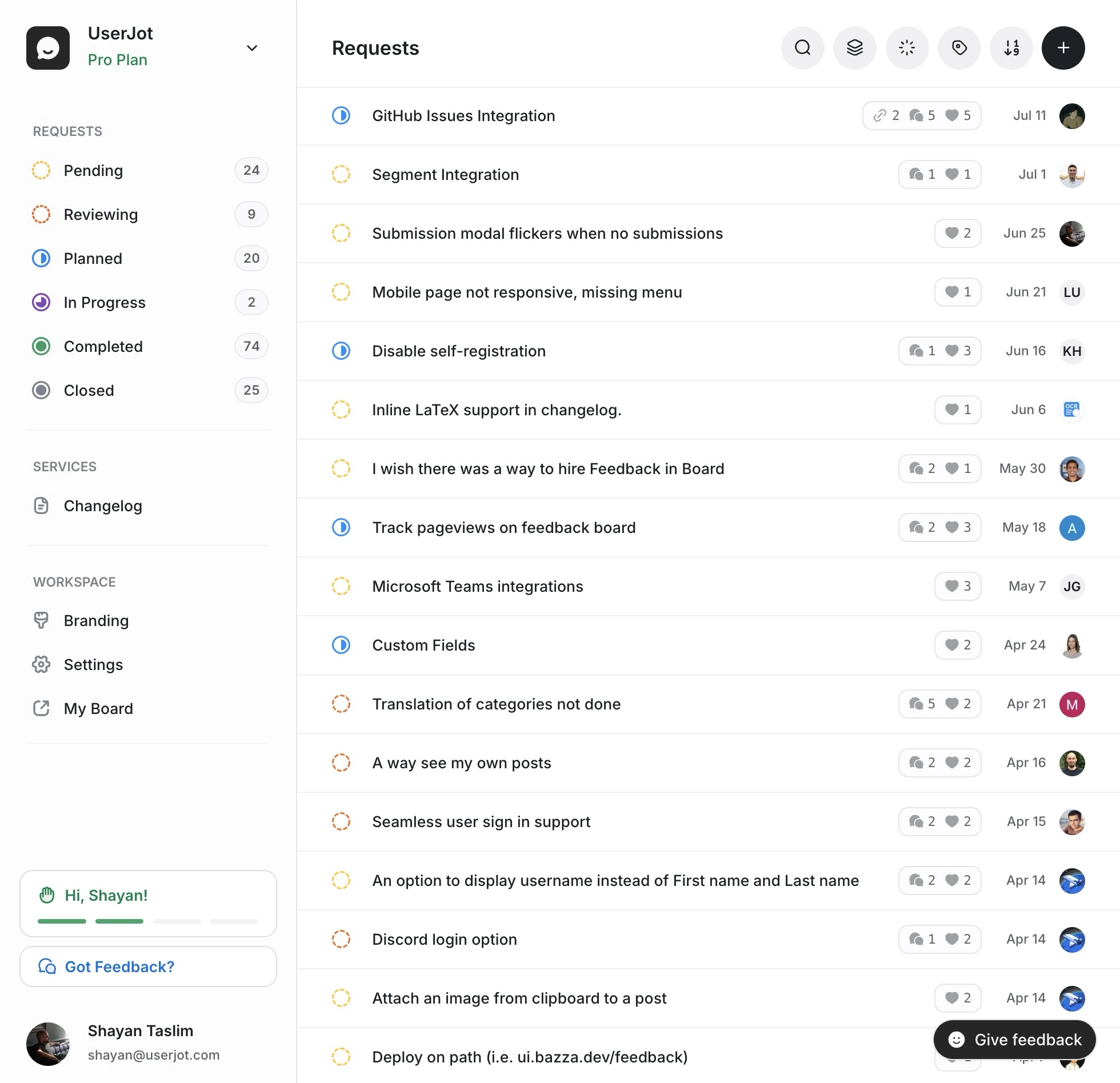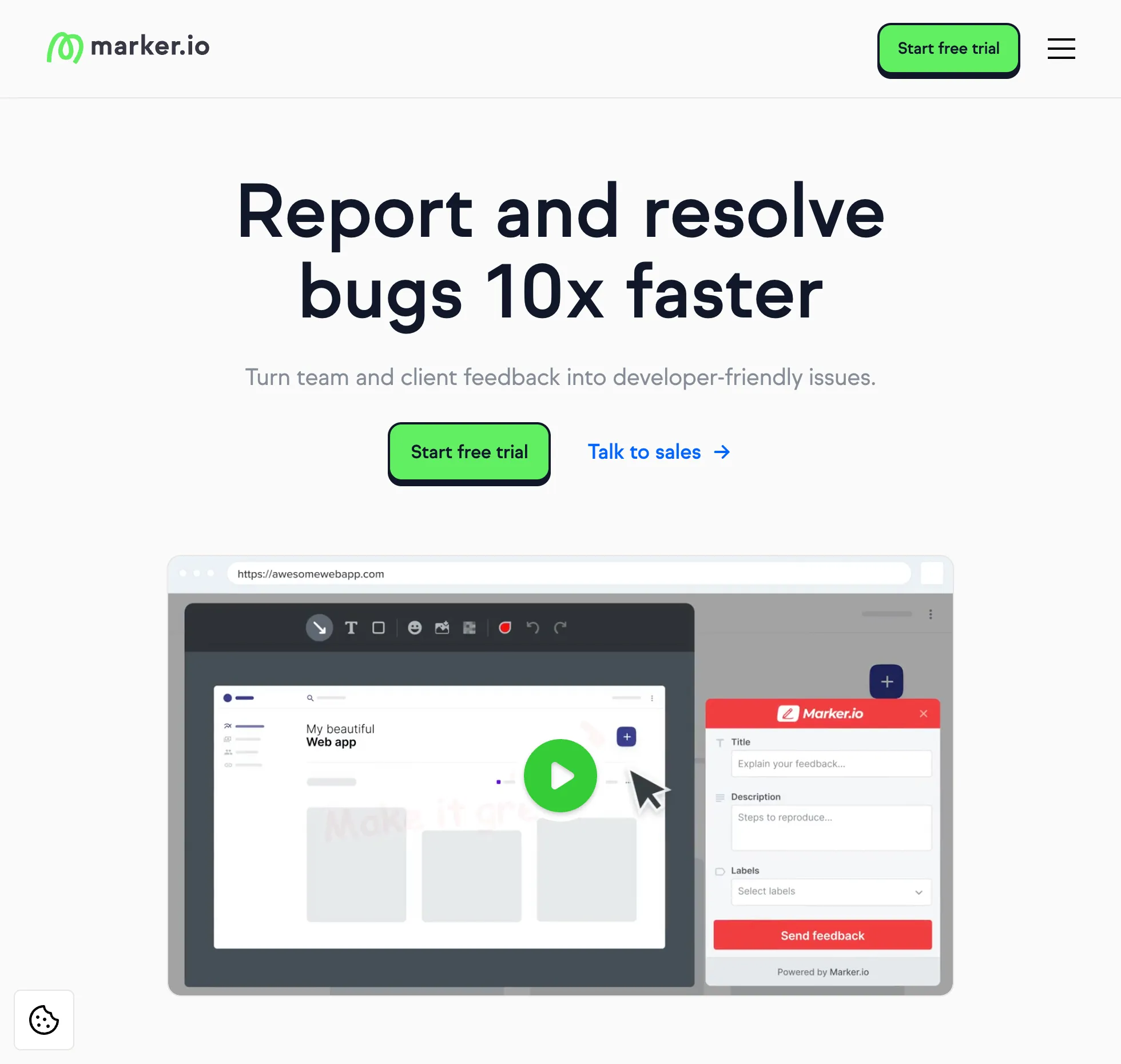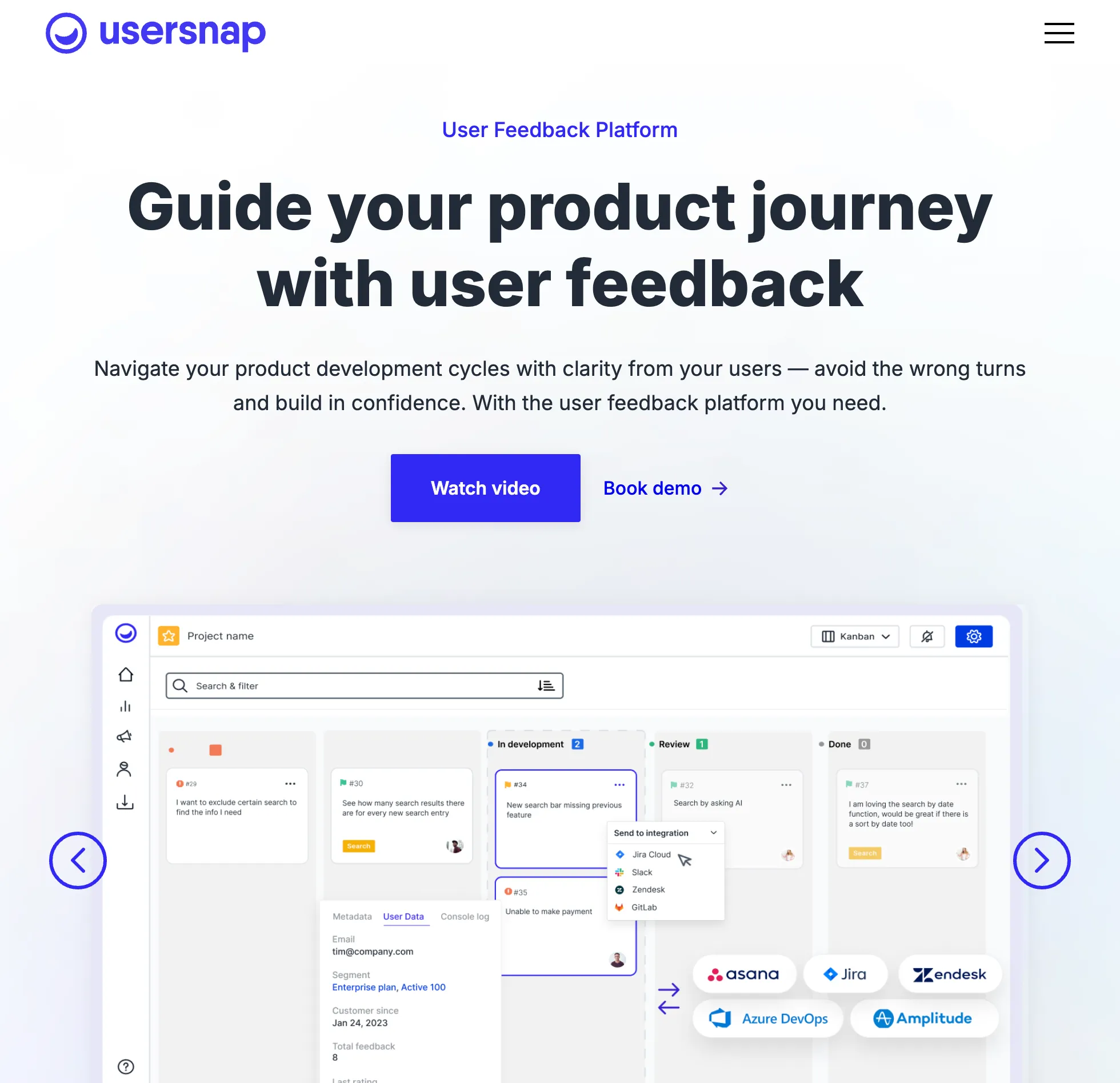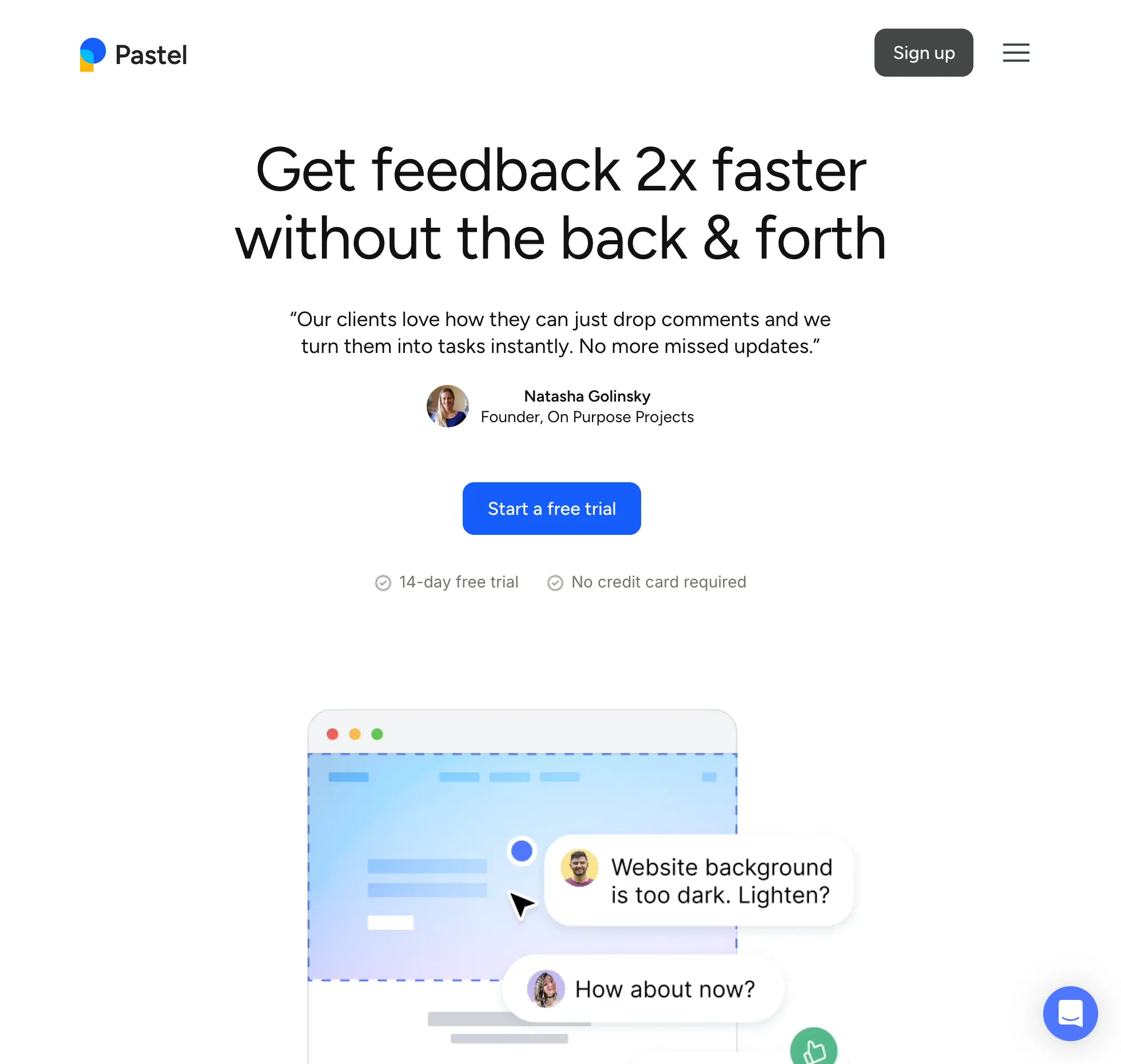Top 6 BugHerd Alternatives in 2026

BugHerd pioneered visual bug tracking for websites. Click on any element, report the issue, and it automatically captures screenshots, browser data, and console logs. For QA teams and web agencies testing sites, it’s been the standard for 14 years.
But times change. Modern product teams need more than bug tracking. They need feature requests, user voting, roadmaps, and changelogs. BugHerd’s $33/month entry point for just bug tracking feels steep when alternatives offer complete feedback management. Plus, that interface hasn’t aged well, and mobile support remains an afterthought.
What is BugHerd?
BugHerd is a visual bug tracking tool launched in 2011, specifically designed for website feedback and QA testing. It works through a browser extension or JavaScript widget that lets users click directly on website elements to report issues. Each bug report automatically includes screenshots, browser information, operating system details, and console logs.
The tool creates a sidebar on your website where team members and clients can see and manage bugs. It’s built around a simple kanban board for task management and integrates with project management tools like Jira, Trello, and Asana. BugHerd essentially turns your website into a collaborative bug tracking environment.
Why Teams Look for BugHerd Alternatives
While BugHerd excels at its core function, several limitations drive teams to explore alternatives:
- Limited to bug tracking only: No feature requests, user voting, or product planning tools
- Website-only focus: Doesn’t work for mobile apps, desktop software, or other platforms
- Dated interface: The UI hasn’t been significantly updated since launch
- No free plan: $33/month minimum with no free tier for small teams
- Poor mobile experience: Not optimized for mobile bug reporting
- Single-purpose pricing: Paying premium for just one function feels expensive
- No public feedback: Everything happens internally, no user-facing boards
- Limited customization: Basic branding options, no white-labeling
If you need more than website bug tracking or just want better value, here are 6 alternatives that expand beyond BugHerd’s narrow focus.
Quick Comparison Table
| Tool | Starting Price | Free Plan | Focus | Best For |
|---|---|---|---|---|
| UserJot | $29/month | Yes (generous) | Complete feedback | Product teams |
| Marker.io | $39/month | No (trial only) | Visual bugs + PM | Dev agencies |
| Usersnap | €39/month | No (trial only) | Enterprise visual | Large companies |
| Pastel | $15/user/month | Yes (limited) | Collaborative design | Design teams |
| Zipboard | $29/month | No (trial only) | Bugs + PM | Content teams |
| BugLab | $19/month | No | Budget bug tracking | Freelancers |
1. UserJot: Beyond Bugs to Complete Feedback
We built UserJot for product teams who realized bugs are just one type of feedback. Why pay separately for bug tracking, feature requests, roadmaps, and changelogs when one tool can handle it all?

Key Features
- Feedback boards with voting and commenting
- Public roadmaps with timeline views
- Automated changelog announcements
- Bug tracking with screenshots
- In-app widget for feedback collection
- Guest posting without accounts
- AI-powered categorization
- JWT-based SSO authentication
- Email digest notifications
- Custom domains and branding
Pros
- Complete solution: Bugs, features, roadmaps, changelogs in one
- Free forever plan: More generous than BugHerd’s paid tier
- Modern interface: Clean 2025 design vs BugHerd’s 2011 look
- Lower cost: $29/month with more features than BugHerd’s $33
- Public boards: Let users submit and vote on ideas
- Mobile-friendly: Full responsive design
Cons
- Less specialized: Not as deep for pure bug tracking
- Newer platform: Less established than BugHerd
- Simpler metadata: Less technical data than dedicated bug tools
Pricing: Free plan (2 boards), $29/month Starter (5 boards, custom domain), $59/month Professional (unlimited everything, SSO).
Best for: Product teams wanting complete feedback management, not just bug tracking. Perfect for SaaS companies prioritizing features over fixes. See our BugHerd alternative guide.
Stop guessing what to build. Let your users vote.
Try UserJot free2. Marker.io: Deep Integration Focus
Marker.io targets the same market as BugHerd but adds deeper integrations and session replay features for more comprehensive bug tracking.

Key Features
- Visual bug reporting with screenshots
- Session replay to see user actions
- True 2-way sync with PM tools
- Browser extension and JavaScript widget
- Console log and network capture
- Custom metadata fields
- White-label options
- Guest reporter access
- Team collaboration tools
- Agency-specific features
Pros
- Better integrations: True 2-way sync vs BugHerd’s one-way
- Session replay: See exactly what happened
- Agency plan: $129/month unlimited projects
- More metadata: Network requests, console errors
- White-labeling: Brand as your own tool
Cons
- More expensive: $39+ vs BugHerd’s $33
- Recent price hikes: Essential features moved upmarket
- Complex setup: More configuration needed
- Still bugs-only: No broader feedback features
Pricing: $39/month Starter (3 users), $149/month Team (15 users), custom Enterprise.
Best for: Agencies and dev teams already using Jira, Asana, or Monday.com who want seamless integration.
3. Usersnap: Enterprise-Grade Visual Feedback
Usersnap takes BugHerd’s visual feedback concept to enterprise scale. More features, better security, higher prices.

Key Features
- Visual bug tracking with annotations
- Screen recording with audio
- In-app surveys (NPS, CSAT)
- 50+ integrations
- SSO and white-labeling
- Multi-language support
- Advanced user metadata
- Custom workflows
- API access
- Compliance certifications
Pros
- Enterprise features: SSO, compliance, dedicated support
- Survey capabilities: Built-in NPS and CSAT
- Extensive integrations: Every major tool covered
- Screen recording: With audio narration option
- Global support: Multi-language interface
Cons
- Expensive: €39-949/month pricing
- Overkill for small teams: Too many features
- Complex setup: Requires significant configuration
- Slow onboarding: Takes time to implement
Pricing: €39/month Starter, €89/month Growth, €159/month Professional, €949+/month Enterprise.
Best for: Large enterprises needing visual feedback with security compliance and extensive customization.
4. Pastel: Modern Collaborative Feedback
Pastel modernizes BugHerd’s approach with a cleaner interface and live website commenting. It’s visual feedback designed for today’s collaborative teams.

Key Features
- Live website commenting
- Real-time collaboration
- Version control for designs
- Canvas mode for any web asset
- Smart notifications
- Guest access without accounts
- Slack and email integrations
- Project organization
- Comment threads
- Status tracking
Pros
- Beautiful design: Modern UI vs BugHerd’s dated look
- Real-time collaboration: Multiple users comment simultaneously
- Free tier available: Unlike BugHerd
- Version control: Track changes across iterations
- No installation needed: Works on live sites
Cons
- Per-user pricing: Gets expensive with larger teams
- Limited integrations: Fewer than BugHerd
- Design focus: Less technical bug data
- Newer platform: Less proven track record
Pricing: Free (1 project), $15/user/month Pro, custom Enterprise.
Best for: Design teams and agencies wanting collaborative visual feedback with a modern interface.
5. Zipboard: Bug Tracking Meets Project Management
Zipboard combines visual bug tracking with broader project management features. It’s BugHerd meets basic PM tools in one platform.
Key Features
- Visual bug tracking
- Project phase management
- Document annotation (PDFs, images, videos)
- eLearning and SCORM review
- Task management
- Approval workflows
- Team collaboration
- Guest reviewer access
- Priority settings
- Progress tracking
Pros
- Built-in PM features: No need for separate tools
- Document support: Annotate PDFs and images
- eLearning focus: Unique SCORM content review
- Approval workflows: Built-in sign-off process
- Organized phases: Structure feedback by project stage
Cons
- Jack of all trades: Not best at any one thing
- Cluttered interface: Too many features visible
- Learning curve: More complex than BugHerd
- Limited customization: Basic branding only
Pricing: $29/month Starter (3 projects), $49/month Team (10 projects), custom Enterprise.
Best for: Teams wanting visual feedback plus light project management, especially in eLearning or content review.
6. BugLab: The Budget Option
BugLab offers a simpler, more affordable take on visual bug tracking. It’s BugHerd’s core features without the complexity or cost.
Key Features
- Visual bug reporting
- Screenshot capture
- Basic metadata collection
- Guest access for clients
- Simple task management
- Email notifications
- Basic integrations
- Browser extension
- Project organization
- Status tracking
Pros
- Cheapest option: $19/month vs BugHerd’s $33
- Unlimited guests: Free client access
- Simple interface: No feature bloat
- Quick setup: Running in minutes
- No minimum users: Start with just one
Cons
- Very basic: Missing advanced features
- Limited integrations: Only essentials
- No mobile support: Desktop only
- Small company: Less established support
Pricing: $19/month Solo, $49/month Team, $99/month Business.
Best for: Freelancers, small agencies, and budget-conscious teams needing basic visual bug tracking.
How to Choose the Right BugHerd Alternative
By Primary Need
Complete feedback management: UserJot provides bugs plus features, roadmaps, and changelogs in one tool. Deep PM integrations: Marker.io’s 2-way sync beats BugHerd’s basic connections. Enterprise requirements: Usersnap offers security, compliance, and extensive features. Modern collaboration: Pastel’s real-time commenting and beautiful UI refresh the experience. Project management combo: Zipboard includes basic PM features alongside bug tracking. Lowest price: BugLab delivers core functionality at 40% less than BugHerd.
By Team Type
Product Teams: UserJot for comprehensive feedback beyond just bugs. Development Agencies: Marker.io for deep Jira integration and white-labeling. Design Teams: Pastel for beautiful interface and collaborative reviews. Enterprise Organizations: Usersnap for compliance and advanced features. Content/eLearning Teams: Zipboard for document annotation and course review. Freelancers: BugLab for affordable basic bug tracking.
By Budget
Free options: UserJot (generous free plan), Pastel (1 project free)
Under $30/month: BugLab ($19), UserJot Starter ($29), Zipboard Starter ($29)
$30-50/month: BugHerd ($33), Marker.io ($39), Usersnap (€39)
$50+/month: UserJot Professional ($59), Marker.io Team ($149), Usersnap Growth (€89)
Migration Considerations
Data export: Most tools support CSV export from BugHerd. Integration setup: Plan to reconfigure connections. Team training: Budget 1-2 hours for new tool onboarding. Client communication: Notify about platform change. Historical data: Decide what’s worth migrating.
Making the Right Choice
For most teams: UserJot hits the sweet spot. Bug tracking when you need it, plus complete feedback management for building better products. The free plan alone offers more than BugHerd’s paid tier.
For agencies: Marker.io if you need deep integrations, Pastel if you value design and collaboration.
For enterprises: Usersnap provides the compliance and features large organizations require.
For budget-conscious: BugLab or UserJot’s free plan deliver core functionality affordably.
Visual bug tracking is important, but it’s just the start of great product development. Choose a tool that can grow with your needs beyond just fixing bugs.
Stop guessing what to build. Let your users vote.
Try UserJot freeFrequently Asked Questions
Is BugHerd only for websites?
Yes, BugHerd exclusively tracks bugs on websites through their browser extension and JavaScript widget. It doesn’t support mobile apps, desktop software, or other platforms. Alternatives like Usersnap and Marker.io offer slightly broader platform support.
Can these alternatives track non-visual feedback?
UserJot excels at general feedback including feature requests, user ideas, and strategic input. Marker.io and Usersnap also support text-based feedback. Pastel, Zipboard, and BugLab remain focused on visual feedback like BugHerd.
What makes visual bug tracking special?
Visual bug tracking automatically captures screenshots, browser data, console logs, and element selectors when users report issues. This context reduces debugging time by 70% compared to text descriptions. The visual element removes ambiguity about where problems occur.
Do I need both bug tracking and feedback management?
Depends on your role. QA teams and agencies testing websites might only need bug tracking. Product teams building SaaS products typically benefit from comprehensive feedback management including features, voting, and roadmaps to guide development beyond just fixing bugs.
Which tool has the best Jira integration?
Marker.io offers the deepest Jira integration with true 2-way sync where changes in either platform reflect immediately. BugHerd provides basic one-way pushing. Usersnap also integrates well. UserJot offers simple integration focused on ease over depth.
Can clients use these tools without creating accounts?
Yes, guest access is standard. BugHerd, Marker.io, Pastel, BugLab, and Zipboard all offer guest reporting. UserJot allows public submissions without any login. Only Usersnap typically requires user registration for reporters.
What about mobile app bug tracking?
Most tools focus on web only. Usersnap supports some mobile scenarios through SDK integration. For comprehensive mobile testing, consider dedicated platforms like Instabug or TestFairy alongside these web-focused tools.
Is the price difference worth switching from BugHerd?
BugHerd at $33/month for only bug tracking feels expensive when UserJot offers complete feedback management starting at $29/month with a generous free tier. Unless you specifically need only visual website bug tracking and nothing else, broader tools provide significantly better value.
How long does migration from BugHerd take?
Typically 2-4 hours including data export, new tool setup, and team training. UserJot provides migration assistance. Marker.io and Usersnap offer import tools. The main work involves reconfiguring integrations and notifying clients about the change.
Should I stay with BugHerd if it’s working?
If BugHerd meets all your needs and the price feels fair, there’s no urgent reason to switch. However, if you’re starting to need feature requests, user voting, or roadmaps, moving to a comprehensive tool like UserJot now prevents needing multiple tools later.